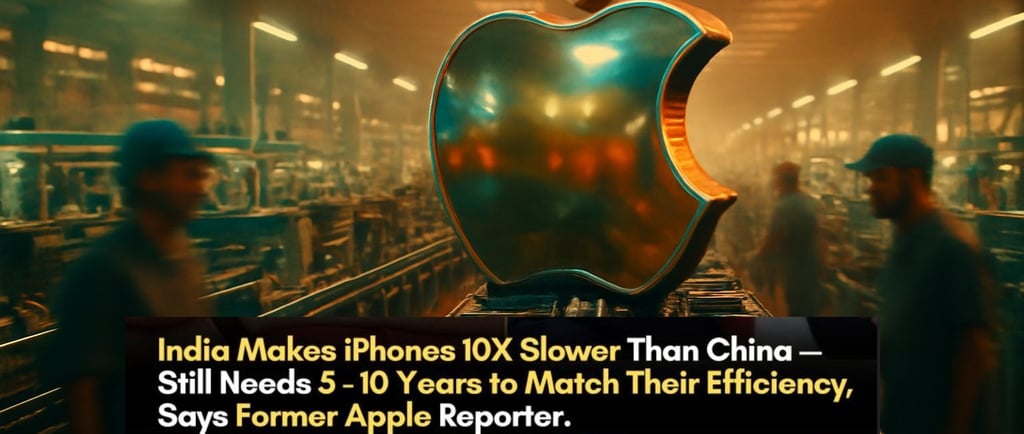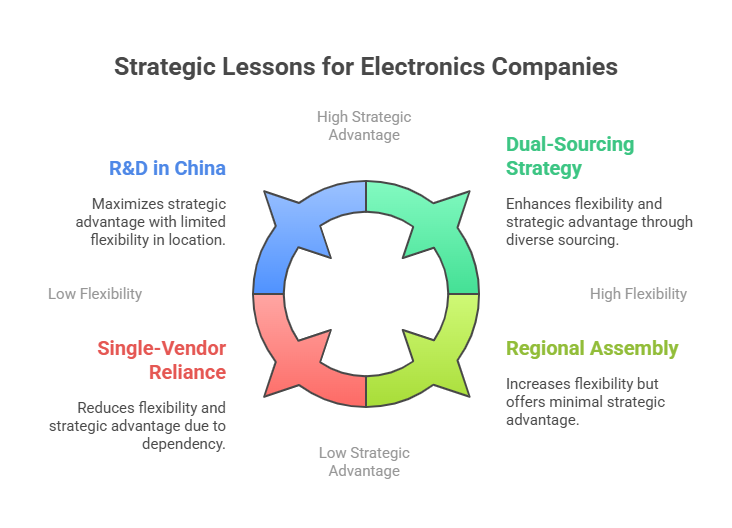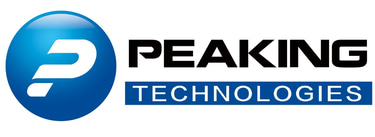Why Apple’s Shift to India Doesn’t Mean the End of ‘Made in China’: What Small Electronics Brands Should Really Learn
Apple may be expanding in India, but Chinese manufacturing remains its backbone. Discover what small electronics brands should really learn from Apple’s supply chain strategy and how to apply it for growth.
JoeZ
6/6/20254 min read


Introduction: The Apple-India-China Narrative
Headlines these days are buzzing with stories about Apple moving production to India. From major publications to tech influencers, many are interpreting this shift as a strategic exodus from China. The Apple-India partnership is often painted as the beginning of the end for China's dominance in electronics manufacturing.
But if you're a small or mid-sized electronics company, take a closer look before jumping to conclusions. The reality is far more layered. Yes, Apple is diversifying. Yes, they are assembling more iPhones in India. But the underlying supply chain—the heart and soul of production—remains deeply entrenched in China.
In fact, understanding Apple's strategy can help you sharpen your own. It's not about replacing China. It's about de-risking and building supply chain resilience. Here's what you need to know, and more importantly, what you should do.
Reality Check: Why China Remains Irreplaceable
The Chinese manufacturing ecosystem is decades ahead of many other countries when it comes to the electronics sector. China’s advantages go far beyond labor cost:
Component Ecosystem: Virtually every component from microchips to screws is made within hours of each other in industrial clusters like Shenzhen, Dongguan, and Suzhou.
Tooling Speed: Rapid mold development and prototyping services make China unbeatable for new product development.
Skilled Workforce: China's technician and engineer workforce is not only large but deeply experienced in electronics assembly, quality control, and high-volume production.
Efficient Logistics: From international shipping ports to high-speed rail networks, China’s logistics infrastructure supports fast and global distribution.
Apple still relies on these core capabilities. Reports suggest that even iPhones assembled in India use parts and modules shipped from China. It’s not surprising: setting up parallel supply chains elsewhere takes years and billions in investment.
For SMEs, these are crucial resources you simply can't replicate quickly elsewhere. For now, and likely the next decade, China remains the best place for component sourcing, prototyping, and high-efficiency production.
The Strategic Move: Diversification, Not Abandonment
Apple isn’t fleeing China. They’re hedging risks. That’s a key distinction. Geopolitical tensions, COVID-era lockdowns, and tariff concerns have pushed companies to explore alternatives. But diversification doesn’t mean giving up what works.
By moving part of their final assembly to India, Apple is:
Reducing overreliance on a single geography.
Building goodwill with the Indian government.
Avoiding some export taxes and duties.
But Apple isn't mirroring its China setup in India. Instead, it's carving out just enough manufacturing to keep regulators and investors happy.
This strategy is not unique to Apple. Tesla, Intel, and many others are doing the same: build resilience without sacrificing efficiency.
As a small electronics brand, you don't need to mimic Apple’s moves. But you can interpret them. Build optionality in your supply chain, not redundancy.
What Small/Mid Electronics Companies Can Learn
You may not have Apple’s war chest or leverage, but you do have flexibility. Here are four takeaways for your business:
Lesson 1: Secure Dual-Sourcing for Key Components
If you rely on a single vendor for crucial components, you’re vulnerable. Identify critical parts—PCBs, batteries, enclosures, chips—and secure at least two reliable sources. Consider keeping one source in China and another in Southeast Asia or Eastern Europe.
Lesson 2: Keep R&D and Prototyping in China
Even if you plan to assemble elsewhere, do your prototyping and early-stage R&D in China. The speed, quality, and affordability are unmatched. Rapid iterations and access to engineering talent can cut months off your time-to-market.
Lesson 3: Explore Regional Assembly to De-Risk Tariffs
If you sell primarily to North America or Europe, consider final assembly or packaging in India, Vietnam, or Mexico. Some startups even ship semi-assembled units from China and do final testing locally to claim regional origin.
Lesson 4: Focus on Agility, Not Hype
Don’t get caught up in media trends. Focus on what works for your size and market. Stay lean, automate where you can, and don’t overinvest in unfamiliar geographies without a clear advantage.


How to Compete in the Shadow of Giants
Apple’s moves ripple through the entire industry. The good news? These ripples can benefit smaller companies, too.
Better Local Suppliers: As giants like Apple and Tesla demand more from suppliers, local vendors in China upgrade their capabilities—and smaller brands can ride that wave.
Lower Cost of Entry: Investments in tooling, automation, and quality standards trickle down, giving SMEs access to world-class infrastructure at lower costs.
Shared Talent Pools: Engineers, QC specialists, and operators trained in big factories often join smaller firms or start service agencies. Leverage that.
Stay close to these ecosystems. Attend trade shows, talk to vendors, visit factories. If you’re based in China or work with Chinese OEMs, you're in the right place—as long as you stay informed and agile.
Conclusion: Don’t Copy Apple — Interpret Apple
Apple’s moves aren’t about escaping China. They’re about managing risk in a complex, global landscape.
If you’re a small or mid-sized electronics company, the lesson isn’t to follow Apple out of China. It’s to learn from their strategy. Build flexibility. Invest in what China does best—R&D, prototyping, and component sourcing. Diversify final assembly if it brings geopolitical or tariff benefits.
Use Apple’s example to refine your operations, not to panic. China isn’t going anywhere. For smart electronics businesses, it remains the world’s workshop—and a strategic ally you can’t afford to ignore.
